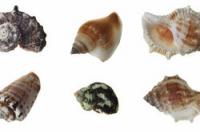Make shading for patio roofing yourself
If you provide your patio roof with "green" shading, you can sit outside even when it is "monkey heat" in midsummer.
Your patio cover offers perfect protection against rain, but when the sun is really shining, does it quickly become uncomfortable to sit underneath? This is often due to the fact that the construction heats up a lot and the heat builds up underneath.
Shading for a pleasant terrace climate
- This can be remedied by providing shade in a natural, effective and relatively simple way Climbing plants. The leaf mass absorbs the rays of the sun and also cools through the moisture contained in the leaves. The air inside the canopy also has an insulating effect.
- When choosing climbing plants, you have many options. If you want to achieve shade as quickly as possible, knotweed is unbeatable. Within a very short time it forms a huge mass of foliage and quickly reaches great heights. However, it also quickly becomes a nuisance. To keep this "leaf monster" on a patio roof in check, after a few years you will not be able to avoid multiple cuts during the summer!
- The beautifully blooming and fragrant wisteria or a more frequently blooming, thornless rambler rose variety is not quite as impetuous, but still grows very large after a few years. With the once-flowering ramblers you should keep in mind that they can also become huge, often have very strong spines and are more suitable for climbing trees.
- Climbers who grow slower and more educated are e.g. B. the climbing hydrangea, real one Wine or the fragrant honeysuckle. However, you need a little more patience here. A few years can pass before adequate shading is achieved. In return, however, you will have less work to do later with taming the climber.
Homemade patio roofing - this is how it works
If you enjoy the summer on your terrace, in changeable weather you have to ...
With or without climbing aid up to the terrace roof
- Whichever plant you choose, ideally you plant it directly in the garden soil and - depending on the type, with or without a climbing aid - follow along on a post of the patio roof above.
- For example, climbing hydrangeas don't need any help while you are Roses or wine have to show the way.
- If your terrace paved, you may be able to remove a few stones to dig a planting hole. If that is not possible, you can use the climbing plant in a sufficiently large one Planterto match the design of your outdoor area or patio cover.
- In this case, however, you have to be more careful than with direct planting in the garden soil that the soil never dries out in summer and that the plant has enough food, i.e. fertilizer, receives.


